Appearance white to yellow powder Molar mass 190.107 g/mol Melting point 150 °C | Formula Na2S2O5 Density 1.48 g/cm³ Soluble in Water | |
Related compounds IUPAC ID Sodium pyrosulphite, Br. E. sodium metabisulphite | ||
Sodium metabisulfite chemical structure properties and uses
Sodium metabisulfite or sodium pyrosulfite (IUPAC spelling; Br. E. sodium metabisulphite or sodium pyrosulphite) is an inorganic compound of chemical formula Na2S2O5. The substance is sometimes referred to as disodium (metabisulfite). It is used as a disinfectant, antioxidant and preservative agent.
Contents
- Sodium metabisulfite chemical structure properties and uses
- Sodium metabisulfite
- Preparation
- Chemical structure
- Food additive
- Sanitization and cleaning agent
- Other uses
- Chemical properties
- References
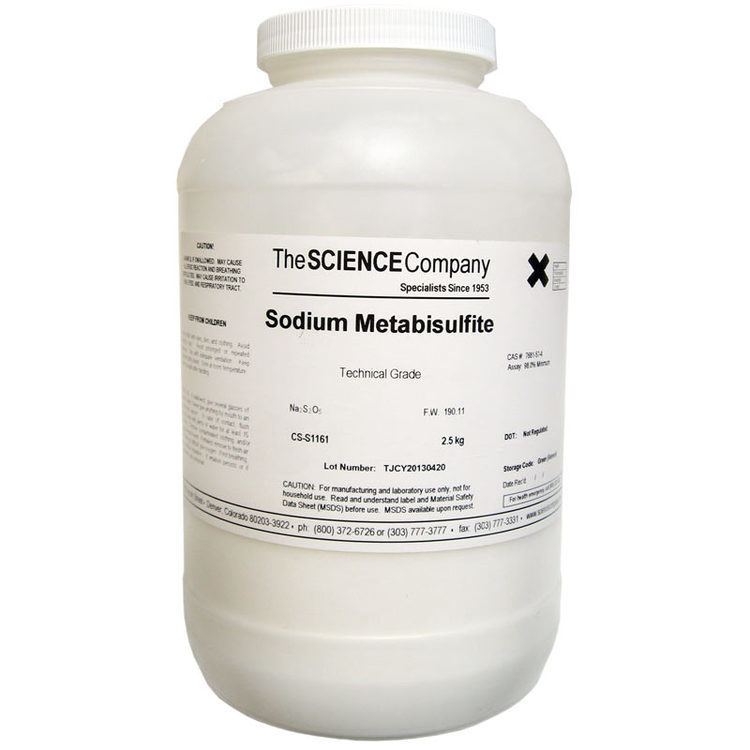
Sodium metabisulfite
Preparation
Sodium metabisulfite can be prepared by evaporating a solution of sodium bisulfite saturated with sulfur dioxide:
2 HSO3− ⇌ H2O + S2O52−which leaves solid Na2S2O5 behind.
Chemical structure
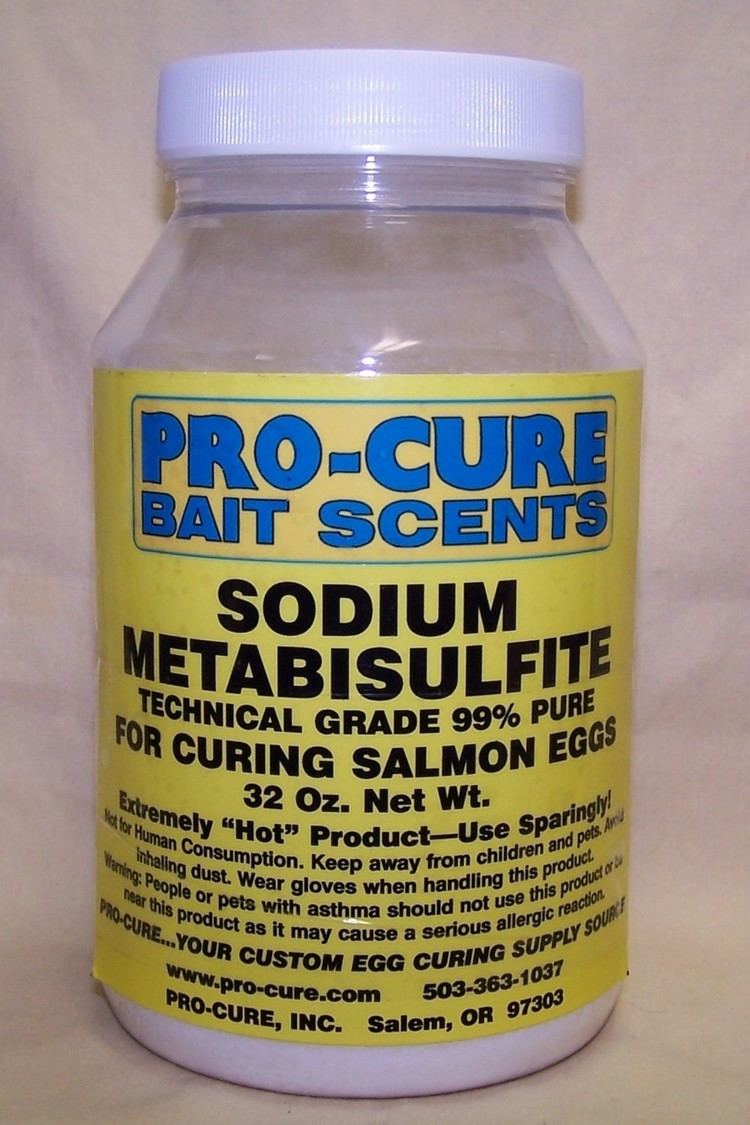
The anion metabisulfite is a hybrid of dithionite (S2O42−) and dithionate (S2O62−). The anion consists of an SO2 group linked to an SO3 group, with the negative charge more localized on the SO3 end. The S–S bond length is 2.22 Å, and the "thionate" and "thionite" S–O distances are 1.46 and 1.50 Å respectively.
Food additive
It is used as a preservative and antioxidant in food and is also known as E223.
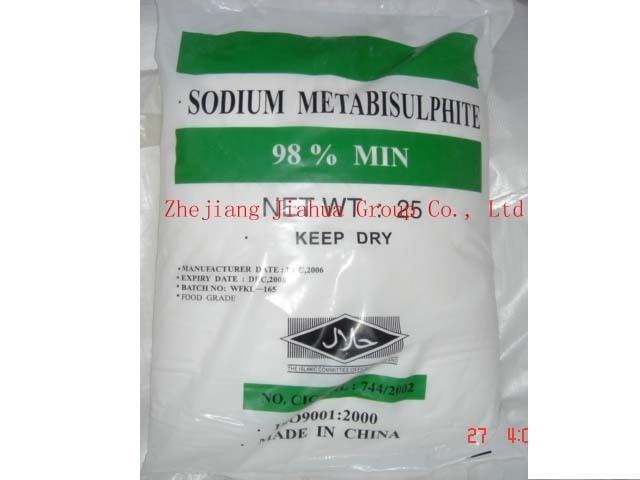
It may cause allergic reactions in those who are sensitive to sulfites, including respiratory reactions in asthmatics, anaphylaxis and other allergic reactions in sensitive individuals.
Sodium metabisulfite and potassium metabisulfite are the primary ingredients in Campden tablets, used for wine and beer making.
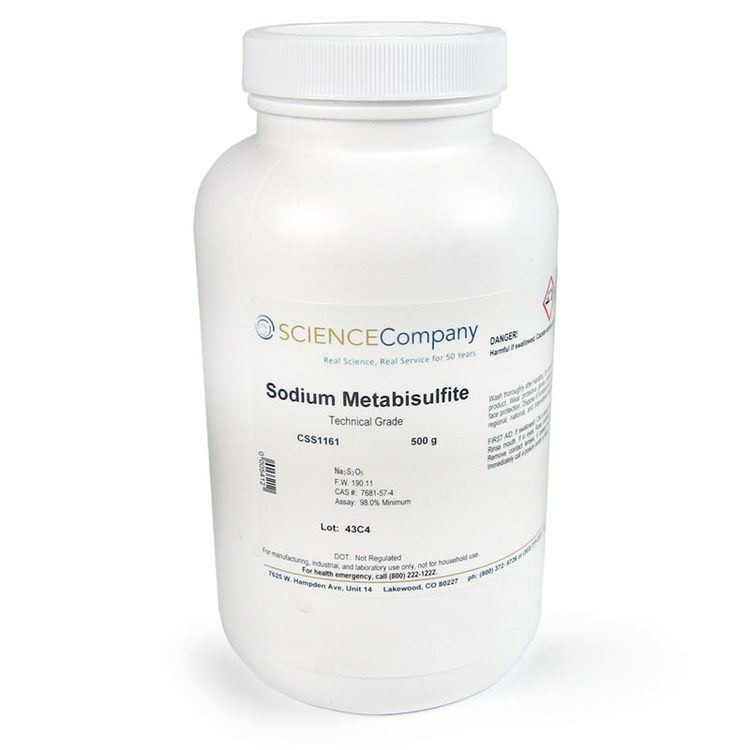
The acceptable daily intake is up to 0.7 milligrams per kilogram of body weight. Sodium metabisulfite oxidizes in the liver to sulfate which is excreted in the urine.
Sanitization and cleaning agent

It is commonly used in homebrewing and winemaking to sanitize equipment. It is used as a cleaning agent for potable water reverse osmosis membranes in desalination systems. It is also used to remove chloramine from drinking water after treatment.
Other uses
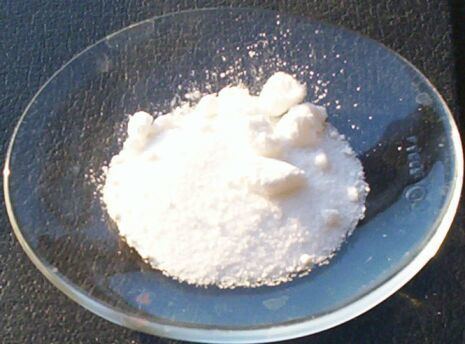
Chemical properties
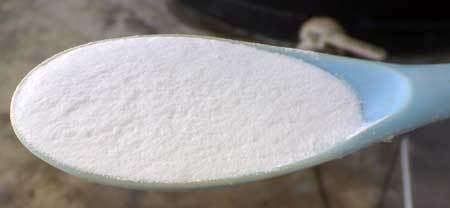
When mixed with water, sodium metabisulfite releases sulfur dioxide (SO2), a pungent, unpleasant smelling gas that can also cause breathing difficulties in some people. For this reason, sodium metabisulfite has fallen from common use in recent times, with agents such as hydrogen peroxide becoming more popular for effective and odorless sterilization of equipment. Released sulfur dioxide however makes the water a strong reducing agent.
Sodium metabisulfite releases sulfur dioxide in contact with strong acids:
Na2S2O5 + 2 HCl → 2 NaCl + H2O + 2 SO2On heating to high temperature, it releases sulfur dioxide, leaving sodium sulfite behind:
Na2S2O5 → Na2SO3 + SO2